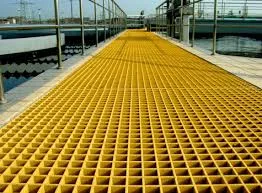
-
 Afrikaans
Afrikaans -
 Albanian
Albanian -
 Amharic
Amharic -
 Arabic
Arabic -
 Armenian
Armenian -
 Azerbaijani
Azerbaijani -
 Basque
Basque -
 Belarusian
Belarusian -
 Bengali
Bengali -
 Bosnian
Bosnian -
 Bulgarian
Bulgarian -
 Catalan
Catalan -
 Cebuano
Cebuano -
 China
China -
 China (Taiwan)
China (Taiwan) -
 Corsican
Corsican -
 Croatian
Croatian -
 Czech
Czech -
 Danish
Danish -
 Dutch
Dutch -
 English
English -
 Esperanto
Esperanto -
 Estonian
Estonian -
 Finnish
Finnish -
 French
French -
 Frisian
Frisian -
 Galician
Galician -
 Georgian
Georgian -
 German
German -
 Greek
Greek -
 Gujarati
Gujarati -
 Haitian Creole
Haitian Creole -
 hausa
hausa -
 hawaiian
hawaiian -
 Hebrew
Hebrew -
 Hindi
Hindi -
 Miao
Miao -
 Hungarian
Hungarian -
 Icelandic
Icelandic -
 igbo
igbo -
 Indonesian
Indonesian -
 irish
irish -
 Italian
Italian -
 Japanese
Japanese -
 Javanese
Javanese -
 Kannada
Kannada -
 kazakh
kazakh -
 Khmer
Khmer -
 Rwandese
Rwandese -
 Korean
Korean -
 Kurdish
Kurdish -
 Kyrgyz
Kyrgyz -
 Lao
Lao -
 Latin
Latin -
 Latvian
Latvian -
 Lithuanian
Lithuanian -
 Luxembourgish
Luxembourgish -
 Macedonian
Macedonian -
 Malgashi
Malgashi -
 Malay
Malay -
 Malayalam
Malayalam -
 Maltese
Maltese -
 Maori
Maori -
 Marathi
Marathi -
 Mongolian
Mongolian -
 Myanmar
Myanmar -
 Nepali
Nepali -
 Norwegian
Norwegian -
 Norwegian
Norwegian -
 Occitan
Occitan -
 Pashto
Pashto -
 Persian
Persian -
 Polish
Polish -
 Portuguese
Portuguese -
 Punjabi
Punjabi -
 Romanian
Romanian -
 Russian
Russian -
 Samoan
Samoan -
 Scottish Gaelic
Scottish Gaelic -
 Serbian
Serbian -
 Sesotho
Sesotho -
 Shona
Shona -
 Sindhi
Sindhi -
 Sinhala
Sinhala -
 Slovak
Slovak -
 Slovenian
Slovenian -
 Somali
Somali -
 Spanish
Spanish -
 Sundanese
Sundanese -
 Swahili
Swahili -
 Swedish
Swedish -
 Tagalog
Tagalog -
 Tajik
Tajik -
 Tamil
Tamil -
 Tatar
Tatar -
 Telugu
Telugu -
 Thai
Thai -
 Turkish
Turkish -
 Turkmen
Turkmen -
 Ukrainian
Ukrainian -
 Urdu
Urdu -
 Uighur
Uighur -
 Uzbek
Uzbek -
 Vietnamese
Vietnamese -
 Welsh
Welsh -
 Bantu
Bantu -
 Yiddish
Yiddish -
 Yoruba
Yoruba -
 Zulu
Zulu
frp products for steel smelting plant
The Role of FRP Products in Steel Smelting Plants
In the ever-evolving steel industry, efficiency, safety, and sustainability are paramount. Steel smelting plants, which are integral to metal production, face numerous challenges ranging from extreme environmental conditions to the need for robust materials that can withstand harsh operations. One innovative solution that has emerged in recent years is the use of Fiber Reinforced Polymer (FRP) products. These materials are transforming the way steel smelting plants operate by enhancing durability, improving safety, and promoting sustainability.
What is FRP?
FRP is a composite material made up of a polymer matrix reinforced with fibers, such as glass, carbon, or aramid. The unique properties of FRP—such as high strength-to-weight ratio, corrosion resistance, and thermal stability—make it an ideal choice for application in industrial settings like steel smelting plants. The versatility of FRP allows it to be customized for different environment and operational requirements, making it a vital component in modern steel production.
Enhancing Durability
Steel smelting operations expose materials to extreme temperatures, aggressive environmental conditions, and chemical corrosives. Traditional materials often succumb to wear and tear, leading to increased maintenance costs and operational downtime. In contrast, FRP products are highly resistant to chemical attack, which is particularly beneficial in areas where molten metal, slag, and other caustic substances are present. The use of FRP components—such as grating, handrails, and tanks—can significantly extend the lifespan of equipment and infrastructure, reducing the frequency of replacements and maintenance.
Improving Safety
frp products for steel smelting plant

Safety is a critical concern in the steel industry, where workers are exposed to hazardous conditions. Standard metal components can pose risks such as sharp edges, weight hazards, and slipping. FRP products offer several safety advantages they are lightweight yet strong, reducing the strain on workers during installation and maintenance. Additionally, the non-conductive nature of FRP minimizes electrical hazards, offering a safer working environment. The use of slip-resistant FRP grating can also reduce the risk of accidents in areas where workers navigate busy production floors.
Promoting Sustainability
As industries globally shift towards more sustainable operations, FRP products present an effective solution. The lightweight nature of FRP results in lower energy consumption during transportation, leading to reduced greenhouse gas emissions. Furthermore, FRP is often made from recyclable materials, and many manufacturers are now producing FRP products with a lower environmental impact. Utilizing FRP in steel smelting plants aligns with the industry's push towards sustainable practices, ultimately contributing to a more eco-friendly production process.
Applications in Steel Smelting Plants
FRP products can be employed in various applications within steel smelting plants. For instance, FRP cooling towers provide efficient cooling solutions while resisting corrosion from hot, caustic environments. Constructing FRP tanks for storing chemical agents or by-products enhances safety due to their non-reactive nature. Additionally, FRP structural components such as beams and columns provide strength without the weight associated with traditional steel structures.
Conclusion
The integration of FRP products into steel smelting plants represents a significant advancement in the industry. By enhancing durability, improving safety, and promoting sustainability, FRP materials are set to play a crucial role in the future of steel production. As steel manufacturers continuously seek innovative solutions to meet the demands of a competitive market, embracing FRP technology will undoubtedly be a strategic move towards greater efficiency and profitability. The transition to FRP is not just an investment in materials; it is an investment in the future of the steel industry.
Latest news
-
Exploring the Benefits of Top Hammer Drifter Rods for Enhanced Drilling PerformanceNewsJun.10,2025
-
High-Precision Fiberglass Winding Machine for GRP/FRP Pipe Production – Reliable & Efficient SolutionsNewsJun.10,2025
-
FRP Pipes & Fittings for Shipbuilding - Corrosion-Resistant & LightweightNewsJun.09,2025
-
Premium FRP Flooring Solutions Durable & Slip-ResistantNewsJun.09,2025
-
Premium Fiberglass Rectangular Tanks Durable & Lightweight SolutionNewsJun.09,2025
-
Tapered Drill String Design Guide Durable Performance & UsesNewsJun.09,2025









